|
A portfolio is an excellent way to keep track of how well your child does throughout their homeschooling years. It shows their progress and alerts you to any issues that you may need to review at a future time.
A homeschool portfolio can also be the key to having your high school student accepted into a college. Most colleges ask for transcripts, but if you homeschool without using a distance education program with a proctor, you won’t have official state documents to share with them. A portfolio of exam grades, projects (pictures are always a great accompaniment to this), and essays – as well as a record of daily grades taken in ninth through twelfth grades can help the administrator lean toward signing an acceptance letter. Have a list of all of the training materials you’re using or have used to educate your child. For textbooks, include the publisher along with the title. Include a list of books that were assigned to your child for reports. Write down some goals you and your child set for each year. This is a great evaluation tool you can use mid-year to see if your teaching skills and their level of absorption are meshing well. If not, then you can switch gears and help them reach their goal before the semester is up. Your child can gain a tremendous amount of pride and self-confidence by seeing that they were able to reach those goals. You may want to keep a record of your daily lesson plan. You can jot down page numbers from the book you were studying so that you know where you left off from the last time. It isn’t necessary to add how well your child did on each lesson unless you want to. Keep samples of some of your child’s schoolwork. It isn’t necessary to put all of their daily papers into the portfolio. You only really need some of their best work to show what progress they’ve made throughout the year. The rest of the papers should be kept elsewhere for awhile - in case they need to be referenced at a later date. Keep a list of field trips you took your son or daughter on. You can then attach reports they may have done for assignments explaining what they learned on that field trip. You can also include photographs taken while you were on the field trips and show some of the things you saw or did while you were there. This will make for a wonderful keepsake later in life. Make sure you check with your state to see if they require anything special to be placed in your child’s portfolio. Your child can decorate the cover and get involved in the maintenance of their own school portfolio to showcase all that they’ve achieved. The Annual Record Portfolio is a printable, downloadable form for purchase in the Homeschooling One Child's store, available here. This Annual Record Portfolio is designed to serve as a homeschool report card, documentation of the year, and to be included in a homeschooler's annual portfolio or saved work from the year. Designed by a homeschooler, it features places to document quarterly, semester, and final grades in a multitude of subjects, as well as standardized or advanced placement testing. This Annual Record Portfolio is appropriate for middle and high school grades.
0 Comments
Christmas is full of sights, sounds, smells, and gifts -- and it can be overwhelming. To connect your homeschooler with the true meaning of Christmas, and encourage learning at the same time, I've curated these 15 Christmas ideas for homeschoolers and their parents.
This post may contain affiliate links, which provide a small stipend to me when you click and purchase using them. This helps maintain this website and the Homeschooling One Child ministry. I thank you for your support. Unto Us a Child is Born In 2015, I wrote an Advent devotional with essays and questions that can be used as a small group study or personal devotional. Unto Us a Child is Born would also make a great stocking stuffer. Building a Snowman A fun activity if you have snow at Christmas or any time during the winter is to build a snowman. Go to thrift shops and find hats and scarves that would make any snow person proud, and keep in a tubbie for safekeeping until snow arrives. Just don't do what I did growing up: I was being chased by my snowball-wielding brother and ran right into our mega-eight-foot giant snowman, frozen solid the night before. That hurt! Rabbit Trails through Christmas Take your holiday studies down a rabbit trail with Rabbit Trails through Christmas! Learn about the Three Kings with the book Baboushka, incorporate copy work, get hands on, and read some amazing Christmas books this season! (books not included). This digital download lesson is meant to be used over one-two weeks -- perfect for Christmas! ChristianBook With the lack of brick-and-mortar Christian bookstores, it's hard to browse and find great deals on Christian-themed holiday decor, supplies, greeting cards, and gifts. ChristianBook.com is my go-to source for all things faith-based and it offers incredible deals on Christmas items. Plus, shipping is often very quick--an important feature during this season. Check out all these stocking stuffers! Hand Made Olive Wood Nativities and Manger Sets from Bethlehem Several years ago, my in-laws traveled to Israel and returned with a gift for my husband: a nativity made out of olive wood from the Holy Land. It is a treasured piece of our Christmas decor. You too can have a handmade olive wood nativity from Bethlehem from The Jerusalem Export House. They also have many other faith-based items. Answers in Genesis Home of the Ark, the Answers in Genesis brings apologetics to a whole new level. Their book, The War on Christmas, answers these and other important questions: What is the truth about Christmas? Why does so much controversy cloud the true meaning and history of this sacred holiday? How can Christian families respond in a culture that seems to be declaring war on truth and rewriting reality? Find it at Answers in Genesis' store (you'll need to plug the title into the search bar). Home Science Tools Give the gift of science this year (including some awesome stocking stuffers) through Home Science Tools, the place where science comes alive and is extremely homeschool-friendly. Access their gift page here or just browse for next year's science curriculum -- or lab kits for upcoming science experiments. Gingerbread House Building Every year, my family enjoys a heated gingerbread house competition. I buy pre-made gingerbread houses and search on Pinterest for creative decor items (check out my board here for ideas and inspiration!), and share these with family. Buying pre-made houses (and I've also seen gingerbread barns, trains, ninjas, and chicken coops!) eliminates the hassle of construction and goes right to the fun part: decorating. Make sure you have plenty of decor items on hand with lots of royal icing. We actually have a gingerbread house competition each Christmas Eve after eating a dinner of heavy appetizers. For wee little ones, you can give them either their own little gingerbread cookies to decorate, gingerbread house stickers, or wee little gingerbread houses that come in a village set to decorate. Reading Luke I'm sure you've read about this one before, but it bears repeating: since there are 24 days until Christmas Day, reading a chapter of The Gospel of Luke each day aloud to your family gets an entire book read, since Luke has 24 chapters. You start reading about the birth of Christ, and it goes through His life, death, and resurrection--the very reason He came to earth in the first place. What a great habit to start, to read a chapter every night of Scripture to your family--and what a great time to start that habit. Quiet Time In the hustle and bustle of Christmas, we often forget to just rest: rest in Jesus and remember His birth, life, and death--and resurrection. This holiday season, make sure you take time to savor the time. Make some hot cocoa, turn off all the lights except for your Christmas tree, and just be quiet. Watch the lights seem to twinkle in the darkness, and meditate on Christ being the Light of the World. Build quiet time into your Christmas schedule for yourself and your family. Baking Baking is science, mathematics, art, and life skills all rolled into one. Take a few days and suspend book work for some serious baking. Ask informal (suspicious?) questions to your children about fractions as they measure flour and sugar; talk about what colors, combined with others, make other colors as they mix icing. Making Christmas cookies and other goodies is a terrific way to spend time together as a family doing homeschool when kids don't even realize they're doing school. Lights Driving around neighborhoods looking at Christmas lights is a fun family activity. Some places even have drive-through mega light exhibitions that, for a per-car fee, you can drive through. Seeing Christmas lights always puts a twinkle in my eye (pun totally intended) and gets me into the holiday spirit. Bringing along a thermos of hot cocoa, cups, and playing Christmas songs on the CD player will further the experience. Learning about Christmas songs Especially for older homeschoolers, studying the origin and theology of well-known Christmas songs is a great way to gain a deeper appreciation for the songs we sing at Advent and for the story of Jesus' birth. These books, electronic and audio books, as well as CDs, will give your family lots to think about and discuss about beloved Christmas songs. Happy Birthday Party In the busyness of Christmas, sometimes we forget that it's Jesus' Birthday. Kids do love birthday parties, so allow them to make a special cake, complete with this amazing cake topper, and served on special birthday plates and decor to celebrate Jesus' birth. Talk about the gifts the Wise Men brought the Baby Jesus, and ask them what gifts could they give Him? It will open up some fantastic discussion and insight into their discipleship journey. Time As homeschoolers, we often think that because we homeschool, we already spend quite a bit of time with our kids. I know I am guilty of thinking that. At Christmas, though, we really need to be intentional with our time and show our kids that Christmas is not about getting the latest gaming system, or a bunch of clothes, or decorating, though all that is fun and exciting. It's about celebrating, together as a family, Jesus' incredible, supernatural, and miraculous birth. Yes, we decorate - but don't we decorate or at least acknowledge our own birthdays? Yes, we give gifts - but didn't the Wise Men give gifts to the Baby Jesus? If we take the time and explain why we do what we do when it comes to the intentionality of the Advent season, our kids will learn it's not about some dude in a red suit or fruitcake or getting an annual package of socks and underwear. It's about so much more: it's all about Jesus. Merry Christmas! Terrie (C) 2021 Terrie Bentley McKee ALL RIGHTS RESERVED As I write this, my daughter has just arose from her bed, an hour past the time when I first told her to wake up and a good two hours since her alarm clock went off. She's 11, and the source of great joy and laughter--and the source of great aggravation and tear-filled days. She can make homeschool so fun and exciting--and she can also make it just plain hard. Harder than it needs to be.
Do you feel me? I want to be able to take her on exciting and educational field trips, full of inspiration and fun, and I'd love to do interesting crafts and projects with her--but with her attitude, just doing textbook work is like pulling teeth without the numb shot. So we don't do many field trips or special days because, when we do them, they feel like I'm rewarding behavior that I'd rather not reward. I have this vision of our homeschool is supposed to be: one of encouragement and discipleship, where my daughter wants to learn and enjoys learning, and I enjoy being her guide on this journey. But on difficult days in which she cops a pre-teen attitude or is intent on running me over while she drives the struggle bus, it's anything but enjoyable or encouraging. How to handle a hard day Honestly, the best way I've found to handle a hard day -- or a hard season -- is to get Laura's dad involved. Often, a call or, like this morning, a text, from him often can persuade her to turn her act around and do her work without sass. Parents must be on the same page with homeschooling (and parenting) or the ship is sunk. Other ways I handle hard days are to take breaks, have conversations about expectations, and make sure my child understands that I am her mother, and she will treat me with respect. We allow the television shows our kids watch influence them too much, and they mimic what they see on television: kids who know more than their parents; weak and ineffective parents who allow their kids to run roughshod over them; or children who have too much say in the goings-on in a household. You are the parent; be the parent. It's one thing to ask for your child's opinion on things; it's quite another to allow the child, who developmentally is not ready, to make sweeping declarations about how the household will be run. Eye-opening conversations In the conversations I have with my daughter, I ask her what she wants from homeschool: more arts and crafts, more music, more fun. I explain to her those are all good things and they can be done--but math, spelling, language arts, and history are also important, as is science. Incorporate arts and crafts, music, and fun in homeschool -- there are labs you can do for science, and making dioramas in history is always a good way to learn. I also ask my daughter if there are any particular things she would like to study. Last year, it was astronomy, and this year, human anatomy. That way, if your child chooses the topic, you get at least some buy-in to what you're teaching. Consider the curriculum Sometimes, you need to consider the source of the frustration. Often, it's the very curriculum you're using that's at the root of the issues. Don't be afraid to change curriculum, or alter it in some way. I sometimes use a science or history curriculum as the text but find worksheets or projects on such websites as Education.com or Teacherspayteachers. I also use puzzles, games, and arts and crafts to supplement a curriculum. Make it your own When you've seen one homeschool, you've seen one homeschool. Stop comparing your homeschool or homeschool space with others, as comparison breeds the lack of contentment. You're not doing public school or school-at-home, you're homeschooling, and you can make it what you wish. Hard days are bound to happen. We don't live in bubbles, and we're all humans. The beautiful thing is, every day comes with new mercies and graces, so extend new mercy and grace to yourself, and your child, every day. If something isn't working, fix it and don't dwell on it. But, if a pattern emerges, figure out what's behind the pattern and deal with it. In Christ, Terrie (C) 2021 Terrie Bentley McKee ALL RIGHTS RESERVED
Oh the humanity! When you've made all these plans and you're expecting a joyous, Pinterest-perfect homeschool day...then your sour child comes to the table with an attitude and half...then a crayon breaks and it's the Third World War.
We've all had those days. I've been known to threaten to send my daughter to public school on a number of occasions. Over the years, though, I've found a few things that work to either prevent or turn around difficult homeschool days. Structure Some children thrive on a loose schedule; they enjoy the freedom this allows and the ability to study what they want, when they want. Other children require structure: a set lineup of the same subjects that doesn't change. If you confuse these two, often, a child will protest [loudly] -- a younger child won't know why he is arguing, and an older one will just refuse to work. Figure out what your child needs and do that -- even if it's antithetical to what you'd want. Participation Grades Last year, my daughter had many, many bad days and honestly, homeschooling was a chore for both of us. She lacked incentive for doing much of anything. This year, though, I started the schoolyear out by telling her she was going to have "participation grades" every day. If she did her work like it was asked of her, without complaining or whining, she would get a 100 for the day. If she whined, complained, argued, or simply refused to work, her daily participation grade would reflect that. Granted, she's in middle school and can handle this, but still, I'm hopeful it will make a difference. Take Breaks Plowing through subject after subject can hurt retention and cause a kid's eyes to glaze over. Have the child take a good 15-minute break at the end of every three subjects, or a five-minute break after each subject. You'll find that if a child has some down time, retention and attention improve. Today, between spelling and math, my daughter and I went out and shot some hoops at the basketball goal. There's nothing wrong with taking a recess break every now and then. Sometimes, you have seasons in which everything goes wrong. Last year, my mother was diagnosed with cancer in mid-September and died October 1. After that was the memorial service, emptying her apartment, dealing with legal matters...and I had no energy whatsoever for homeschool, or writing, or anything. So we took an extended break. I told Laura, who was dealing with her own grief, to just read if she felt like it. By the time mid-November came, we hopped back on the homeschool horse and starting riding again. We picked back up where we left off and just dealt with it. And you know what? It was okay. We could not handle another thing, and that's the beauty of homeschool. Laura learned more about dealing with the stages of grief and life than anything...and that will carry her in real life more than diagramming sentences ever could. Change Curriculum Sure, you've invested a lot of money in curriculum. But if the child is struggling with it, or the structure of it, your investment has already tanked. Go ahead, get a different curriculum, or use a variety of curricula for subjects. There's no one saying you have to use the same publisher for all your subjects. I used a grammar curriculum once and my child hated it--and so did I. So we bought a simple workbook from a teacher's supply store and used that, and it was fine. But the attitude she had had while doing the original curriculum was horrible--and a good indicator something was wrong. Run Around the House On days in which my daughter is Little Miss Cranky Pants, I tell her to go run around our house five times. Usually, by the third time around, her attitude has changed and she's tired of running around the house. Now, I realize that not everyone can do this, but certainly you can have a child sit in the corner staring at the wall, or something to clear heads. When in doubt, chores are a perfect way to clear heads. If bad attitudes continue, stop academics for three days and have everyone do chores and projects around the house until attitudes change. Count them as life skills. Homeschooling is difficult enough without attitudes, but we as parents can do things to minimize difficult homeschool days. In Christ, Terrie (C) 2021 Terrie McKee ALL RIGHTS RESERVED A new homeschool year is about to start: new crayons, new markers, new curriculum. It's an exciting time! To make the Back-to-Homeschool transition as smooth as possible, here are my top 10 tips for back-to-homeschool. This post may contain affiliate links, which provide a small stipend to me and my family, at no cost to you, when you purchase using the links below. We thank you for your continued support. Tip 1: Develop a mission statement Yes, this one seems like it can be a bit dry. Sure, mission statements are usually associated with corporations or businesses, but they can serve a purpose within your homeschool. A good mission statement can remind you of why you homeschool and center all your homeschool activities and academics on one goal. For our homeschool, we've taken Deuteronomy 6:5 and reworded it to our mission statement: The mission of Agape Farms Christian School is to teach our child to love the Lord our God, using all our heart, all our soul, and all our strength, for the Glory of Jesus Christ, the Son of the Living God. Our homeschool is therefore focused on increasing our daughter's faith through her heart, mind, and body, all for the glory of Jesus Christ. This is the litmus test for everything we do in our homeschool. Use whatever mission statement you want to, just make sure the activities and academics in your homeschool dovetails what your mission statement declares about your school.
Tip 2: Create ID Badges Many businesses offer discounts to teachers, even homeschool teachers, with an identification badge that has your photo, the name of your homeschool, and your homeschool ID number (usually you get this when you register as a homeschool with your state). Other times, it's just really nice and official to have a homeschool badge, like on field trips. To obtain a homeschool ID badge, you can order one through Homeschooling One Child's store here. Tip 3: Make the First Day Special Whether you homeschool part of the year or all year long, you can start off the year right by making the first day special. Usually, Laura and I go to a local doughnut shop and eat yummy, not-on-the-diet confectionary treats while doing our devotional together, praying over the homeschool year, and doing one subject in the doughnut shop (usually spelling). We then go home and get cracking on all the other subjects. This year, Laura will be using the Student Record Planner from Not Consumed to keep track of her lessons, her grades, and as an academic journal. We are positive this will help her with some executive functioning issues we've noticed she has, and allow her to track in a grid format her grades. This will be in essence her academic bible, to go everywhere she goes: co-op, the library, everywhere. The first day will be spent going through the Student Record Planner, completing some housekeeping tasks associated with it, and making it her own. This is also when I will introduce to her a new concept for this year: daily participation grades. With tween hormones comes tween drama, and whining about doing all the subjects starts early. I've decided I'm nipping that in the bud with giving her a daily grade on how she performs, without whining, every day. Tip 4: Add Subjects in Gradually This tip comes to us from Julie R., a homeschool mom from Maine, on Homeschooling One Child's Facebook page. She wrote, "...start off slow--gradually adding in school subjects over the course of a few weeks." For example, our homeschool year starts September 1, which this year falls on a Wednesday. we'll do Bible, spelling, math, and reading September 1-3, then Monday September 6 we'll do all that, plus incorporate history and science. The next week, our co-op starts up, and the week after that, I'll add in grammar (which this year is diagramming sentences). We don't throw every single subject at Laura the first few days, even if the first day of homeschool (usually September 1) falls on a Monday. She needs time to get acclimated to all of it, especially since our expectations just increased. Tip 5: Think outside of the box for breakfast devotionals In our homeschool, we'll have breakfast while watching a video that is an online Bible study. I access RightNowMedia.com through my church's membership, which they allowed teachers to use. In addition to teaching with it, I use it for Laura's homeschool Bible study as they have a great deal of studies for children and tweens. Ask your church's leadership to get a subscription to Right Now Media and make it accessible for homeschooling families in your congregation. Of course, nothing beats studying the Bible itself and by no means should any book or videoed study take the place of reading Scriptures. Make sure you take time before homeschool, during the day, and at night to read to your children the Holy Word of God -- no matter what age they are. And incorporate prayer in your day as well. Tip 6: Crafts Make Studies Come Alive For history and science especially, nothing makes lessons stick better than crafts. When Laura was younger and studying about different formations in the earth, she used clay and paint to make a diorama of a mountain, stream, ocean, plains, valleys....and after she painted it, she had to label everything. She worked so hard on that, looking at pictures in books, and replicating what she saw, that she learned it. To this day she can tell you what the different earth formations are. This year, she will be studying Apologia's Human Anatomy and Physiology, and I cannot wait to work with her on using clay to make a skeleton laying on a board (as opposed to standing up), and have her label all the bones. We're also going to our local butcher shop and buy pig's feet (the animal that most closest approximates human skin and tissue) to dissect then suture closed. These crafts and activities incorporate all the senses and makes the lessons come alive for the child. What crafts or activities can you do to make your child's lessons come alive? Tip 7: Don't Replicate Public School In our homeschool, we don't do "school at home," or call it "school." "Homeschool" incorporates so much more than that. Unless your child just does so much better early in the morning, you don't have to get up at the crack of dawn to start school. You can ease into your day. Homeschool is so much more than a 8:30 a.m. - 2:30 p.m. regimen in which you're making your child miserable, and you too, by copying public schools. Dr. Mary Hood first coined the phrase "relaxed homeschooling." Author of five books about homeschooling, including The Relaxed Homeschool: A Family Production, The Joyful Homeschooler, and The Enthusiastic Homeschooler, she said this phenomenal quote: "Relaxed homeschooling is a mindset that embraces these four tenets: you are a family, not a school; you are a dad and the head of a household, not a principal; you are a mom, not a teacher; and you have individual relationships with your children, not a classroom. Learning experiences are guided by parental goals and the goals, interests, and personalities of the children.” You and your children get to decide what your homeschool will be like. No one else. There's a lot of freedom -- and responsibility -- in that. But oh, it's so worth it. Tip 8: Incorporate Chores When we homeschool, our houses tend to get messy. You have crafts going on in the living room, books strewn about the dining table, the kitchen is playing host to a chemistry convention, and the cat just chucked up a hairball that will soon be on slide for the microscope. There's no better way to teach Life Skills than to use them in life. If a child can operate a tablet, or a laptop, or a smart phone -- he or she can most definitely operate a washing machine, dryer, vacuum, dishwasher, and hand-wash dishes. Chores should most definitely be a part of any homeschool -- in addition to helping keep the house clean, they're learning for when they move out. When you're doing the bills for the family, show the kids the income and watch it go. Show them what it takes to pay bills. One game we have is "Act Your Wage!" Boardgame by Dave Ramsey. This game is a fun way for anyone over 10 years old to learn the principles of saving and spending -- and it's a great addition to any homeschool. Tip 9: Take Breaks Incorporate breaks into the school day and year. If you want to take a month off in December to celebrate Christmas and travel or spend time with family, you most certainly can do that. There is no one making the academic calendar for you other than yourself. It's really important, though, during the homeschool day, to take breaks. There's only so much of pouring in of information one can take before it's overwhelming. What we do, for an example, is BIble, spelling, and math -- then a thirty-minute break. Laura comes back, does grammar, then it's time for lunch. History and science are next, then a break. Reading afterwards and she's done. There's no raising of hands in our homeschool as we homeschool one child (that's why the blog is named the way it is), so if at any time she needs a bathroom break or a drink of water, she can get it, no questions asked -- as long as she comes back to the table promptly. There are times when Little Miss has a bad attitude. At that time, I tell her she needs to take a break and run around the house three times. It's amazing what that does or bad attitudes or getting the Focus Button to engage. Tip 10: Relax This is probably the most important tip. Relax. Enjoy the time you have with your child. Teach them but have fun, too. Go on hikes. Talk. Play. If your child asks a question, answer it, but also ask what he or she thinks. Relax and just enjoy this time, because it goes by oh so fast. Do you have any tips? Leave them down below in a comment! Don't miss anything -- subscribe to our email newsletter today! In Christ, Terrie (C) Terrie McKee ALL RIGHTS RESERVED As a mom of four children (three of whom are adults and live out of the home), homeschooling the baby of the bunch is very different than working with all the others on homework. Admittedly, the older ones attended public school but the nightly homework checks and help was always a thing--and I can say without a doubt homeschooling one child is both easier and harder at the same time.
This post may contain affiliate links. When you purchase using these links, I receive a small commission at no charge to you. This keeps this website and my homeschooling one child minstry going -- and I thank you. Homeschoolers who teach "just" one child (don't you just hate that? "You homeschool *just* one? You have *just* one child?" Well, yes, we homeschool one child...) do so for many reasons. For me, it was because my daughter was diagnosed with chronic migraines, dyslexia, and ADHD. Her IEP wasn't being followed and she was being bullied. With all that, plus the encroaching culture that was approaching public schools that went totally against my Christian beliefs, my husband and I chose to homeschool her, and we haven't looked back. Still, parents homeshool one child for many, many reasons: perhaps they have a child with chronic health or developmental needs, or they have a child who just does better in a one-to-one environment. Regardless, homeschooling singletons comes with a whole host of special situations. Competition One thing that I've learned with my daughter is that kids compete with one another in multiple child settings even though we don't think they do. With homeschooling one child, that competition goes away. The single child can focus on learning for learning's sake instead (or for relationship's sake), but, this also makes it difficult for when there are games (like playing HangMan for spelling) that would be nice if there was another kid in the room. Board games are an integral part of our homeschool. While we usually wait until my husband is home from work to play a board game together, we also choose games that are good for just two people and games that have a little educational value to them, such as Game of the States, a two-to-four player game designed for ages 8 years and older. Players race their trucks across the country, buying and selling goods along the way and learning interesting facts as they go. This newly updated version features educational S.T.E.M. facts about each state (Science Technology, Engineering, and Math). Double Bananagrams is a two-to-eight player letter game (great for spelling words!) that is packaged in a cute banana-shaped zippered bag. A quick-paced game where players build their own crosswords, everyone plays at once - no waiting! It's a learning tool, a family activity, a non-electronic fun game that sharpens word skills. Socialization When we announced to our families that we were going to homeschool our daughter, the biggest question we received was about socialization and friends. Here's the deal: there isn't that much socialization allowed in public school. Kids sit at their desks, cannot talk with one another, they're segregated by grade and age, and can only interact at recess and lunch--unless that is taken from them as punishment. Although my daughter is the only pupil in her school, we have playdates with kids her age, younger and older children, and we visit adults. She has learned how to interact with a large segment of society, from babies to kids her age, to teenagers, to adults. I'd call that socialization. We have made it a point to get her enrolled in groups, though, not necessarily for the social aspect but to add to her homeschool experience. While some homeschoolers utilize co-ops and enrichment clubs (and those are great options!), we haven't found any in our area that we like. We have, though, enrolled her in our county's 4H program and in our church's American Heritage Girls troop. She attends Sunday School and participates in youth events. Learning academics and interacting with people aren't relegated to the hours of 8 a.m. - 3 p.m.; learning never stops. Resources The biggest thing with homeschooling a singleton is the lack of resources. The stigma with homeschooling is that you need to have 10 children and a 15-passenger van. While there are parents who homeschool multiple children (and a 15-passenger van), that's not the only homeschooling scenario. I've found that a correlation to this stereotype is the lack of resources for parents homeschooling one child. But no more! I am excited to announce the Homeschooling One Child Online Summit--an online conference geared to encourage and inspire parents who are homeschooling singletons. Sponsored by Towers of Light Christian Resources, The Waldock Way, Powerline Productions, SPED Homeschool, Notgrass History, The Art of Special Needs Parenting, and The Mystery of History, many speakers and sponsors have come together to help parents of singletons. Each session and curriculum spotlight is dedicated to homeschooling just one child. Participants receive lifetime access, a digital swag bag, all the sessions, and the curriculum spotlight, for just $25. To register, click here. Homeschooling singletons can have a lot of joy -- once you see the child "get it," and then share that knowledge with someone else, it really is extraordinarily satisfying. In Christ, Terrie (C) 2021 Terrie Bentley McKee ALL RIGHTS RESERVED Read alouds are a great way to help your children fall in love with books. Getting them to sit still and listen to the book can be a challenge that leaves parents frustrated.
This common problem is easier to fix than you think. Sometimes it can be stressful watching our children fidget while we try to read to them but the truth is a little fidgeting can help them pay better attention to the story you are reading to them and sit still longer for the reading than they could if they tried to just sit still and listen. Offer your child a sensory activity to help them focus. This is a great way to get more into your day. Sensory play helps kids gather themselves so they can focus better the rest of the day. Opt for simple activities like homemade slime, or playdough that can help calm and soothe while they listen allowing them to perform better on other lessons. Keep hands busy without distracting minds. Activities like coloring is a great read-aloud project. Give them coloring pages that go along with the book you are reading to help connect the two. Coloring doesn't take much thought but keeps the hands busy allowing children to focus their attention on you reading to them. If your child needs to be a bit more physical to focus give a peddler or exercise bike a try. This will give them something physical to burn off excess energy to help them all day long and give their body something to do so their mind can focus on your reading aloud to them. If you have an extra copy of the book you are reading aloud, have them read along and take over reading out loud once in a while. No matter what method you use to help your child focus during reading aloud, you can take advantage of asking your child questions to see if they are truly focused. This also helps them work on reading comprehension and retention skills. (C) 2021 Terrie Bentley McKee ALL RIGHTS RESERVED Most people think of a typical homeschooler as a mom. Truthfully, a homeschooling mom typically is the one who has direct, daily contact with her homeschooler. Also truthfully, a dad who is engaged with his family's homeschool adds so much.
This post may have affiliate links. When you click on these links and purchase from them, I receive a small commission at no charge to you. This helps ensure this website keeps providing you resources. I thank you for your support. When my husband, Greg, says to people, "Yes, we homeschool our daughter," it makes my heart soar. He's taking ownership of our homeschool just as much as I am. He never says, "Yes, my wife homeschools our daughter." He has as much ownership in it as Laura and I do -- and with that comes responsibility. Looking Over School Work Though Greg works out of the home, I make sure I include him in our day by sending him texts about what we're doing, or pictures I take of completed tests, grades and all. He will also include himself in homeschool by asking Laura what she learned that day, or how she could have improved a test grade. He asks questions. He also looks over school work, projects, and is involved in looking at field trip opportunities that we make into family outings. Teaching Teaching life skills or academics is something else that dads can do. Greg is paralyzed from the waist down, and a full-time wheelchair user, so a lot of what he teaches Laura stems from sheer persistence and determination. He often takes her to wheelchair basketball practices where she is exposed to people with physical disabilities who have amazing athletic talent and abilities. The lessons she learns during these trips are life-altering. When there's a tire that needs replacing on her bicycle, or something needs adjusting on his basketball wheelchair, he'll often include Laura in those repairs and teach her about mechanics, tools, and maintenance. Teaching life skills -- even if it's folding laundry from a wheelchair -- is important in developing Laura into a responsible adult with a strong work ethic. There are times he has taught academics, as well -- particularly geometry. He takes an active role in her education, by either supporting me when I'm teaching her or lending a hand with academics directly. Reading Dads can take an active role in homeschooling simply by reading. Turn the television off and read to your child, either the Bible or a book from the curriculum. We are studying Ancient History right now, and there's nothing like reading (or listening to the CD version in the car) of The Mystery of History. When Greg reads to her, it not only helps to get him involved in our homeschool, but also gives me a break. Encouragement Of course, Greg and other homeschool dads need as much encouragement as homeschooling moms do. They need the tools, resources, and information to become the spiritual leaders of their families, and to know the importance of homeschool. It also helps to encourage homeschooling dads about financial management, discipleship, and how to get involved in co-ops and enrichment clubs. To that end, I am so pleased to bring the Homeschooling Dads Online Conference to fruition. God laid this conference on my heart in late summer 2020, but with my mom's cancer diagnosis and death, life as I knew it just stopped. But now, with the Lord's blessing, I'm happy to announce that homeschooling dads can be encouraged and inspired by speakers such as Davis Carman from Apologia, Israel Wayne from Family Renewal, Andrew Pudewa from the Institute for Excellence in Writing, and many others (including my own husband, Greg McKee). For just $11, participants receive lifetime access to all the online sessions and a Digital Toolbox (manly way of saying a swag bag!) full of coupons, printables, resources, and encouragement. This conference is brought to you by homeschooling dad and men who have a heart to encourage other men in their daily walk -- with God, their families, and their homeschools. For more information on the conference, click here. To register directly, click here. Devotions Another way a dad can make a mark in homeschool is by leading his family spiritually. Facilitating daily devotions with the family, or just reading Scripture and praying together, is a powerful way to ensure that the husband is loving his wife -- and children -- as Christ loves the church. Children need to be lead by their dad and mom, a united front. So many times the dad is absent (either physically or emotionally) and that can wreck havoc on the biblical order of families. Dates and Adventures Finally, one thing I love that my husband does is take our daughter on dates. Sure, it may just be lunch on a Saturday as I'm cleaning house or on the way back from a basketball practice, but these little "dates" show her that her dad cares and wants to talk with her (read: not to her). If you have a daughter, take her on a date. Open the door for her. Show her how she needs to be treated. If you have a son, take him on adventures: camping, hiking, fishing. Take your daughter on hikes, too, and your son to lunch. Mix it up. The main thing is, dads have so much to give, and frankly, moms cannot do it all. The biblical order of things gets all messed up when we try to do things our way, or the way that we're told from Hollywood. Dads, you have so much to give and what you offer is so very important. In Christ, Terrie (C) 2021 Terrie Bentley McKee ALL RIGHTS RESERVED
Buying homeschool curriculum can be an extremely expensive endeavor--complete, in-the-box, grade kits, or various textbooks for various children. Even if you're homeschooling one child, purchasing year-long curriculum can shrink the bank account.
My husband is the main provider of our family, so we're basically on one income while homeschooling our daughter. We have learned a number of ways to acquire homeschool curriculum on a budget, including shopping at thrift and consignment stores, online, and other ways. This post may have affiliate links. These links direct you to products and publishers that have helped me in my homeschooling journey. When you click on and purchase something using these links, I receive a small commission at no charge to you. Thank you for your support. Homeschool Coupon Book Spring Group Giveaway Who doesn't need a bit of PayPal Cash and Homeschool Supplies? A group of bloggers has come together to offer a $220 value giveaway. The winner will receive PayPal cash to spend on Homeschool Needs and Homeschool Supplies that anyone will enjoy in their homeschool. We are choosing the supplies we love best or wish we had!! It's going to be a surprise you don't want to miss out on!! If you enter this giveaway, you will be added to the following email lists: Jus Classical, Peace Creek on the Prairie, Townsend House, BJs Homeschool, The Art Kit, Homeschool Coupon Book, Grapevine Studies, Jen Dodrill History, Brookdale House, and Homeschooling One Child. Enter below! Thrift Stores Where I live, we have a number of thrift stores such as those that support ministries like the Salvation Army and Habitat ReStores, that support Habitat for Humanity. These thrift stores vary greatly depending upon store, management, and locale, however, if they sell books, you stand a very good chance of finding quality (albeit used) curriculum. They may not be the newest publications, but usually with things like grammar, mathematics, literature, and Bible, it's okay. With math, unless you want to go the Common Core route, it's best to have older textbooks. Inventory is never predictable, and you almost have to go weekly to look at what they received in donations and put out to sell on the floor at any given time. At my local thrift stores, I have found LifePacs Bible curriculum, complete, for eighth grade (which I bought and put in my "future curriculum" tubby (that would be a suggestion, for you, too). I have also found a government / civics textbook that, although old (2008), the basic foundation of government is addressed in detail with questions to answer. That went into the future curriculum tubby for ninth grade. I have found living books that covered our study of Ancient History this year, and other living books and resources for our study of Human Anatomy and Physiology for next year. I have found literature textbooks and literature reading books (we're going to study literature next year after three years of grammar). Now, at these thrift stores, no book was over $2. At one thrift store, they were having a Bag of Books for 5 Bucks sale, so I stuffed that bag full of textbooks, readers, resources, you name it. Consignment Stores If you live in an area, like I do, that is blessed with a homeschool consignment store, I'd use homeschool curriculum catalogs to decide what subjects I want from what homeschool publishers, and I'd head to my homeschool consignment store with a list in hand. Even if a curriculum is not the newest publication, it still has relevant information. You can always supplement with newer material you find on the Internet. I have saved hundreds of dollars by utilizing both my local homeschool consignment store and consignment sales that happen in the community that offer books and homeschool material. When I bought Laura's 5th grade curriculum (a hodge-podge of different publishers because we're a Charlotte Mason / eclectic / traditional homeschool), I bought over $900 worth of resources for $74. No kidding. And much of it we will reuse, with harder supplemental material for later grades. If your local library has a Book Sale, absolutely attend that (bring a box or large bag for your acquisitions). Any non-fiction book that covers history or science (be mindful it aligns with your worldview) can be a textbook: read the chapter you want your child to read, and write out questions to be answered. Or, like I do with my daughter: she reads a section, and I ask her to write out what we call "Five Facts." These Five Facts are used for her to study and are written on the unit test. Again, inventory is wildly varied, but if you can find copies of well-known literature books, there are certainly worksheets to be found on the Internet for that book. Or, have your children write book reports on them. Library While we're on the topic of libraries, you can teach all subjects with just your library card. From preschoolers and kindergartners where you're reading to them, introducing letters and numbers, and allowing them to learn via play, to elementary school and beyond -- if you have no budget for an actual, store-bought homeschool curriculum, use the library. From literature to grammar, science to history, and everything in between, you and your child can read a book together, then create or print worksheets off the Internet, or develop projects or written reports. EBay I have a confession: I refuse to teach my daughter Common Core math, so I purchase older (early 2000s, before Common Core came into fashion) actual math textbooks, in which she uses spiral notebooks to work the problems. I go over the lessons with her, we do some problems together, then she does a section of problems herself. It works, and it has saved me a ton of money on math curriculum. Last year I also bought her science book this way and it went well, too (this year she wanted to learn astronomy). I just purchased her math book for next year. Yes, it's older and a little beat up, but it was less than $6. For someone who will be buying a whole year's worth of curriculum on a tiny budget, I really love spending $6 for a math book. To explore homeschool curriculum on Ebay, or other textbooks, just click here. Online An Internet search of "free online homeschool curriculum" can give you a list of many free online programs, and many families base their entire homeschool on those programs. If you have a Pinterest account, you can use that as a search engine for worksheets on many subjects, and therefore develop a curriculum that meets your budget. There are many homeschooling bloggers who create worksheet printables, curriculum, unit studies, and workbooks who are affordable -- and you're supporting a family, as opposed to a corporation. I've developed a list here for your perusal. I encourage you to check out this extensive list of curriculum, resources, conferences -- all to help you in your homeschooling journey. There are a few websites I use often (but am not an affiliate) in my own homeschool that, truth be told, I'd be lost without. Teachers Pay Teachers,Education.com, and Help Teaching all offer quality worksheets, projects, and unit studies for a wide variety of grades. Help Teaching in particular has a databank of testing questions so you can create comprehension tests on a wide variety of subjects and materials. The most important consideration, besides budget, of a curriculum is to make sure it works -- for your child, and you. We once tried a curriculum that frustrated both my daughter and myself, so we ditched it and found something else. Honestly, it's really difficult to do that when you've paid hundreds of dollars for something. Yes, I would love to be able to afford an entire, boxed curriculum but that's not for us in this season. I encourage you to check out the resources in bold above and find what works best for your child and you. That is, ultimately, one of the best benefits of homeschooling -- the parents and children get to determine what they learn, how they learn it, and from where they learn it. And you get to set the budget. Subscribers to Homeschooling One Child's email newsletter receive a free, homeschool budget planner! To receive your planner, and a wealth of other tips, deals, coupons, and subscriber-only info in the email newsletter, simply subscribe here. Happy Homeschooling! Terrie (C) 2021 Terrie Bentley McKee ALL RIGHTS RESERVED $200 Value Homeschool GiveawayWho doesn't need a bit of PayPal Cash and Homeschool Supplies? A group of bloggers has come together to offer a $220 value giveaway. The winner will receive PayPal cash to spend on Homeschool Needs and Homeschool Supplies that anyone will enjoy in their homeschool. We are choosing the supplies we love best or wish we had!! It's going to be a surprise you don't want to miss out on!! If you enter this giveaway, you will be added to the following email lists: Jus Classical, Peace Creek on the Prairie, Townsend House, BJs Homeschool, The Art Kit, Homeschool Coupon Book, Grapevine Studies, Jen Dodrill History, Brookdale House, and Homeschooling One Child.Enter Below!!a Rafflecopter giveawayEncouraging your kids to explore the hobby of gardening can help them develop a basic understanding of botany and positive personal characteristics of self-confidence and a sense of achievement. Children have long been interested in the beauty of nature, and gardening offers a character-building opportunity for them to develop a better understanding of the world around them and explore virtues such as patience and responsibility.
All of these wonderful benefits await your child as he or she expresses a desire to learn more about gardening. And as parents, we have the responsibility to assist our children in the learning process. As you help your child plant his or her garden, you want to make sure that they learn how to do so correctly so that their plants grow, flower, and even produce fruit. But you also want your child to learn about the consequences that are a result of negligence. So below are some suggestions for steps you can take to make the process of establishing a garden as successful as possible for your child. The first step in starting a garden for kids is to talk with your kids about the plants that they are interested in growing in their garden. Ask them about their favorite vegetables. Perhaps they would rather grow a flower garden. Growing some flowering plants and some vegetable plants is a good idea because they attract bees that pollinate the vegetable plants. There are also certain types of plants that attract butterflies. Decide on a combination of a few plants. Do not go overboard. Start with just a few plants that your child can devote his attention to caring for. Another factor to consider when deciding on what plants to include when you are gardening for kids is the plant's resiliency. You do not want to start your child off with a high-maintenance plant. Some kid-friendly plants include the Sunflower, the Balloon flower, Lambs Ear, and Grape Hyacinth. The Sunflower and Balloon flower both have beautiful big blossoms and can grow to impressive heights (a fun thing for your child to see that they have been responsible for). The Lamb's Ear grows very soft leaves, and the Grape Hyacinth is a pretty yet very strong plant that doesn't need much more than the occasional watering to grow well. Once you and your kids have chosen the plants for your garden, purchase the plants and any appropriate mulch or fertilizer and get to work. Help your kids with the initial planting process. Teach them that plants need good healthy soil if they are to grow. Let the kids do a lot of digging to learn the value of hard work and later see the results of their hard work. Once the planting is done, the kids will need to water their plants regularly and ensure that their plant bed remains free of weeds and pests. It is a good idea to plan your kid's garden by your full-size garden so that they can see what it takes to make the garden grow. Encourage them to go outside with you to water and weed their plants as you do the same for yours. If you do not have land on which you can garden, grow a container garden. Some plants do very well in container gardens, and your child will have a very similar gardening experience even if their garden is potted. After much hard work, it is time for harvesting. Any vegetable plants can be picked, brought inside, and prepared for consumption. Parents, make a big fuss over the fact that your child is responsible for the great vegetables that are to be eaten. Make a meal that your child is especially fond of so that their vegetables taste even better. Here are some resources to help you explore gardening with your children (these may be affiliate links; when you click on these links and purchase something, we receive a small commission at no charge to you, that helps keep this website up and running. We appreciate your support). Homeschool Homesteading Course This homeschool homesteading course is designed for anyone who has a desire to live more independently and prepare much of what is needed each day using their own hands. In this elective course, the student can learn how to work for what they want by making it themselves, instead of participating in an “on demand” society. Homeschool students of all ages learn patience, along with the skills needed to make their own cleaners for the home, sunscreen, homemade ketchup and dry mixes, as well as how to choose animals and prepare for emergencies, and much more. Learning the patience and usefulness of “doing it yourself” can be immensely helpful not only in the sense of living a healthier life, but also for the budget! Homeschool families can live more simply by learning what many generations of people have known, but the current generation seems to have forgotten —live simply, make do with the basics, and take an active part in gaining the benefits for yourself, your family, and the world God has given us by having fewer chemicals in the home. Sign up HERE. Gardening Books and Planners These books from ChristianBook.com cover garden planning, various fruits and vegetables, herbs, and a host of other garden-related resources. Dive into gardening HERE. 'For Such a Time as This' Online Summit Gardening is a huge part of preparedness, as you can grow food to feed your family in times of uncertainty. John 16:33, “I have said these things to you, that in me you may have peace. In the world, you will have tribulation. But take heart; I have overcome the world.” The urgency is great. With all we have seen in 2020 and 2021 we know it does not hurt to be prepared! Friend, God's Word is and needs to remain our go-to source of information and encouragement. It gives us direction and brings us peace and He called us to be watchful and be prepared. But what does that look like? If you need to learn more about staying prepared join us for the For Such a Time as This Summit! Join the summit today for 60+ LIVE and pre-recorded sessions, discussion groups, giveaways, and a digital swag bag of resources! Sessions will be live on Zoom followed by breakout room discussions. Included in this amazing conferences are sessions on HOMESCHOOLING, Faith, Family, Discipleship, Apologetics, and of course, Preparedness! Get your ticket and lifetime access to all sessions for just $25. Don’t delay! SIGN UP HERE. Gardening can be incredible fun with your kids, but it can also be highly educational. It blends science, math, nutrition, with physical exercise, and great food, too. See you in the garden! ~ Terrie (C) 2021 Homeschooling One Child |
AuthorTerrie Bentley McKee is an author and speaker who homeschools her youngest daughter. Married to her husband Greg, they have four children, all of whom have special needs of varying degrees. Terrie is a follower of Jesus Christ and tries to glorify God in all she does. To read more about her testimony, click here. Affiliate LinksHomeschooling One Child is a participant in the Amazon Services LLC Associates Program, an affiliate advertising program designed to provide a means for sites to earn advertising fees by advertising and linking to amazon.com. Check out our YouTube channel!Check out our podcast!Please pin!Archives
January 2024
Categories
All
|
(C) 2023 Terrie Bentley McKee ALL RIGHTS RESERVED

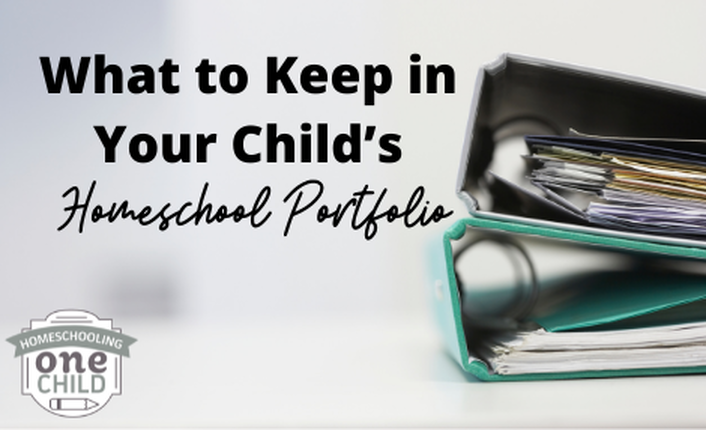

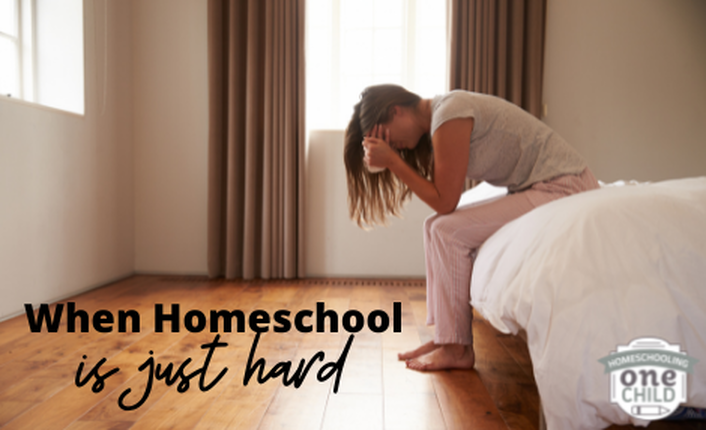




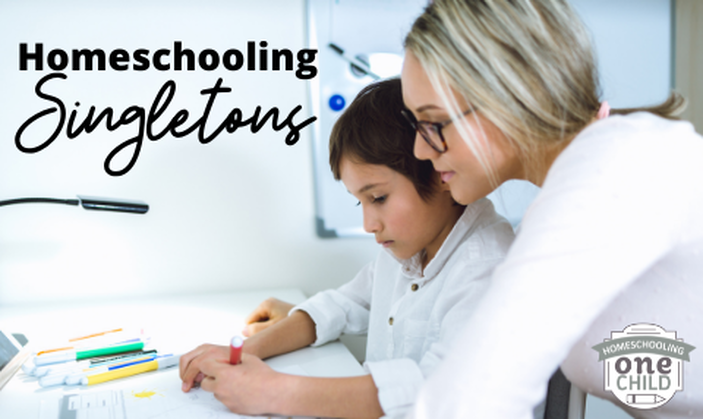
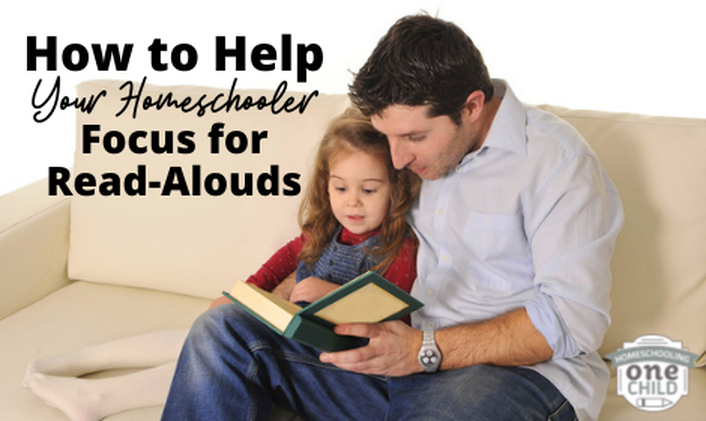

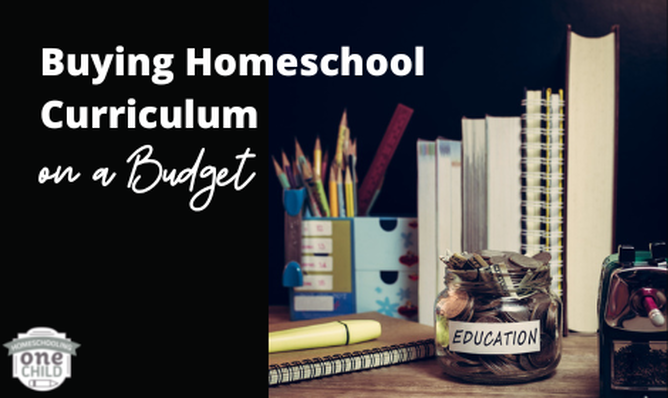

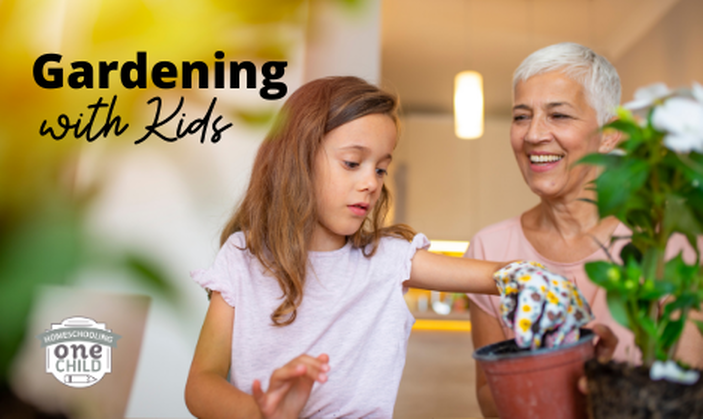
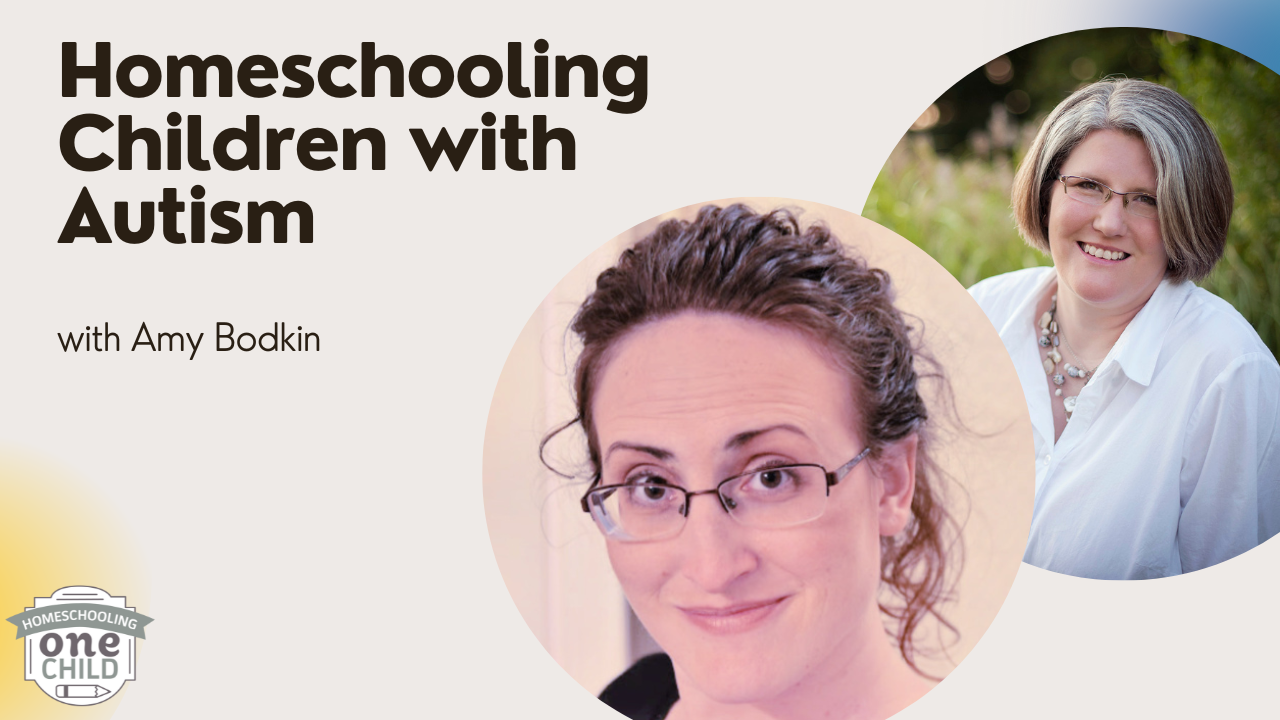
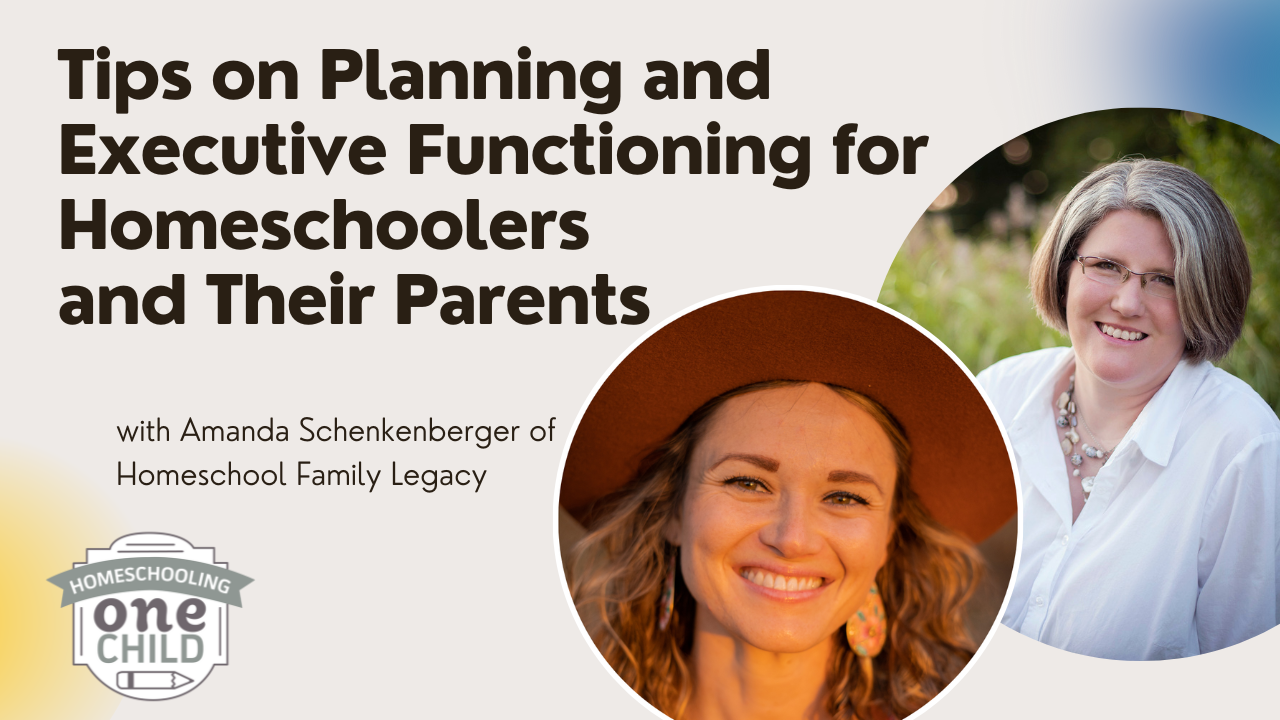

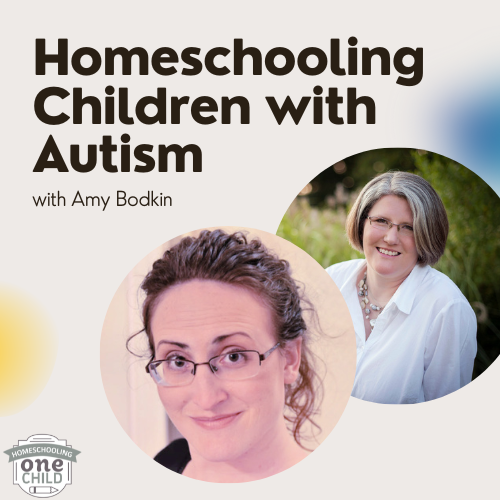
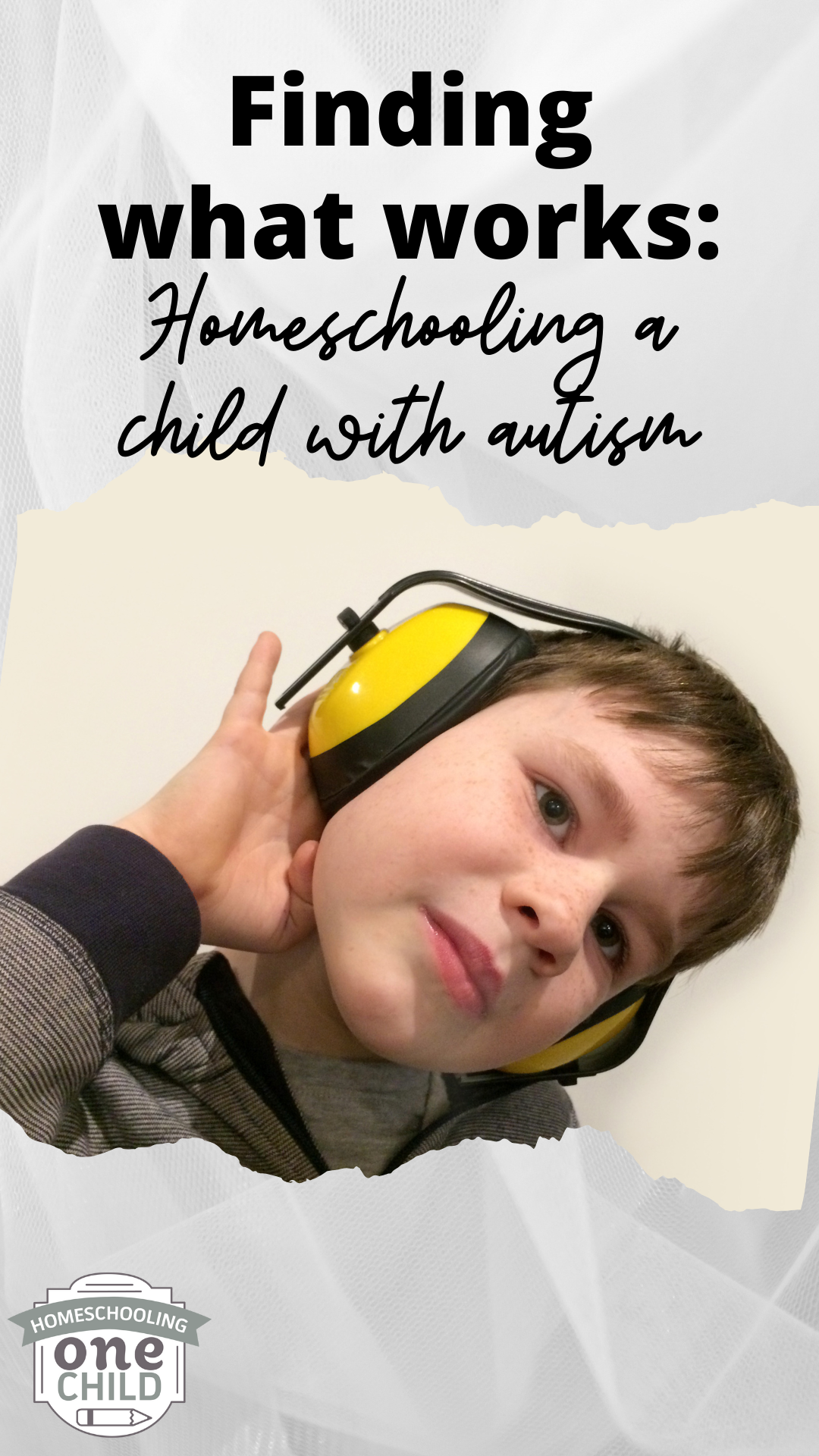
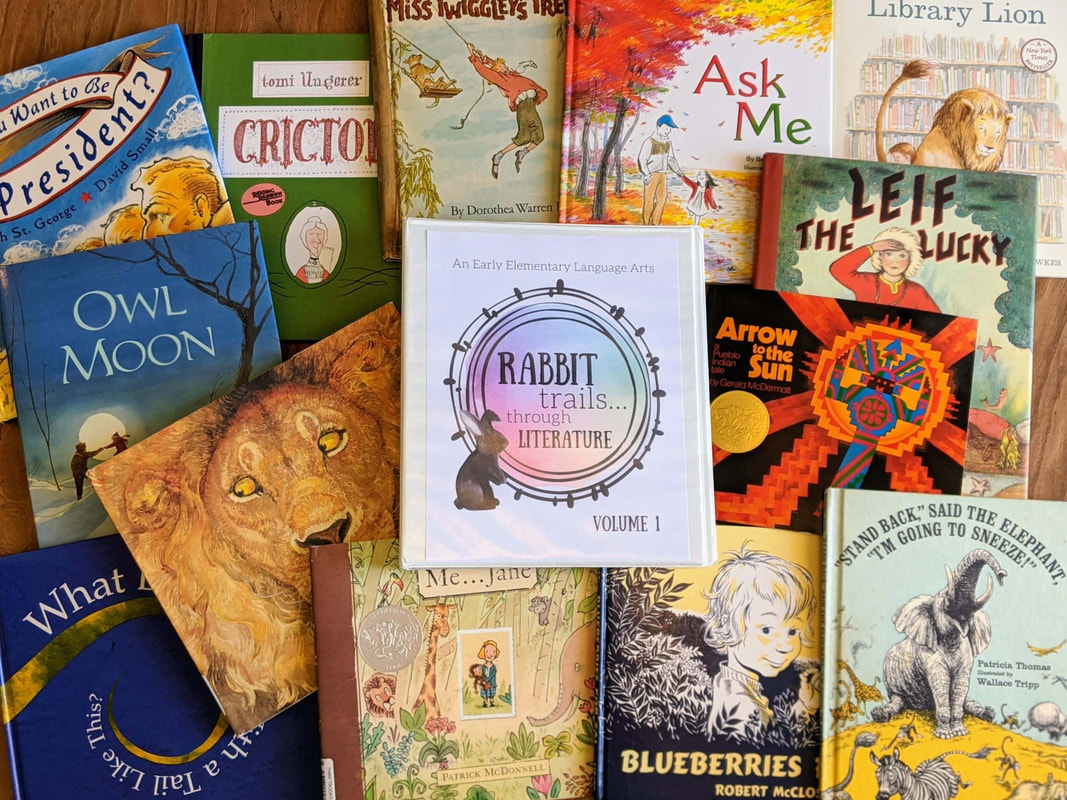
 RSS Feed
RSS Feed
